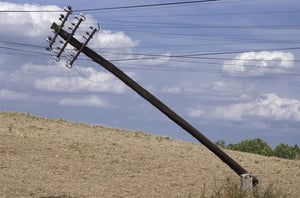Utility Pole Violations (Part 2): Damage on the Pole
 In our 3-part blog series, we are investigating common pole conditions that interrupt service deployment and increase asset owners’ risk. In part 1, we looked at dangerous conditions on utility poles.
In our 3-part blog series, we are investigating common pole conditions that interrupt service deployment and increase asset owners’ risk. In part 1, we looked at dangerous conditions on utility poles.
This article will look at the multitude of possible damage and violations in the field. Jointly-shared utility poles have many working parts that keep operations in motion for power, telephone, broadband, and television services. Over time the cost of damage adds up.
Watch the video below to see damage and violations up close.
During our pole inventory experience, we have found several types of damage and violations.
Four common types of utility pole damage on utility poles that joint use management teams should consider are:
Cross Arms + Attachments
Hardware
|
|
Damaged hardware should be replaced as soon as possible. The hardware may be so faulty that the cross arms, cables, and anchors cannot stay attached. Further, damaged hardware is a liability for asset owners as it poses dangerous threats to maintenance teams.
Anchors
Natural Damage
Keep Damage and Violations at Bay
Staying Organized During an Inventory
For example, dashboards that help organize inventory data allow joint use teams to create transparency. They alert users of all types of requests, such as pole transfers, permits to attach, miscellaneous requests, or pole removals.
Project teams can see in real-time the status of any in-progress inventory. Users can be notified when violations or damage are found, as well as the action that should be taken.
What information would you like to see in a dashboard during a damage and violations inventory? Let us know in the comments below.